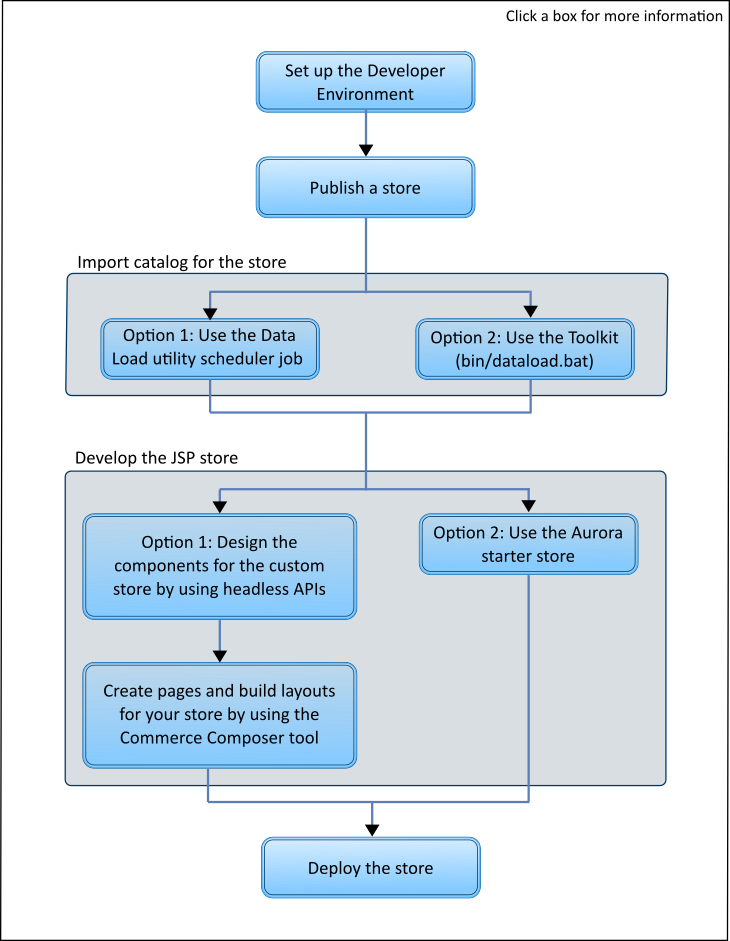Creating a custom store using JSP
This HCL Commerce store uses Java Server Pages (JSP) to implement the view layer of the Model-View-Controller (MVC) design pattern.
Store Architecture
HCL Commerce separates individual front-end storefronts from the servers on which they rely. This architecture increases security, scalability, flexibility in server topology, and improves the ease of development and deployment of stores and store customizations.
The Store server consists of a lightweight JVM that separates the storefront presentation layer from the search and transactional backbone. The Store server persists user sessions with cookies, and handles security through the web channel (that is, between the store and the user over HTTP and HTTPS). All store transactions, search queries, and user authentications are done through REST services with the Transaction server and Search server. The Store server has no direct database access.
The programming environment separates all customized storefront assets into a single web application archive. This separation of custom files from provided defaults allows for a simplified lifecycle, where changes become easier to implement when improvements to HCL Commerce are released.
For a detailed description of the JSP store architecture, see Store architecture.
Process to create the custom store using JSP
Creating your custom store consists of the following main steps:
